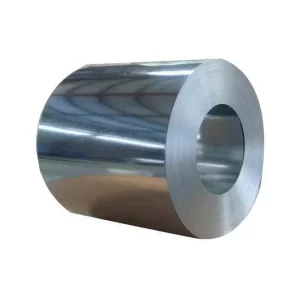What is the effect of cold rolling on stainless steel?
Stainless steel, renowned for its corrosion resistance, strength, and durability, is a crucial material in numerous industries ranging from food processing to medical equipment and construction. To further enhance its properties and tailor it to specific applications, stainless steel undergoes various processing techniques, one of which is cold rolling. Cold rolling is a critical step in the production of stainless steel products, significantly altering its microstructure, mechanical properties, and surface finish.
1) Understanding Cold Rolling
Cold rolling involves passing stainless steel through a series of rollers at room temperature or below the steel's recrystallization temperature. This process applies significant compressive forces to the metal, causing it to thin and elongate. As the material flows through the rollers, its grain structure becomes elongated and compressed, resulting in a more uniform and dense microstructure.
2) Effect on Microstructure
One of the most significant effects of cold rolling is the transformation of the stainless steel's microstructure. The initial equiaxed grains, characteristic of hot-rolled or cast stainless steel, become elongated and distorted during the cold rolling process. This grain refinement leads to an increase in the material's strength and hardness due to the increased dislocation density and grain boundary area. However, this improvement in strength and hardness comes at the cost of reduced ductility and toughness, as the elongated grains hinder slip planes during deformation.
3) Improvement in Mechanical Properties
The microstructural changes induced by cold rolling translate into notable improvements in stainless steel's mechanical properties. The increased strength and hardness make it more suitable for applications requiring high resistance to wear, abrasion, and deformation. Furthermore, the cold-rolled surface exhibits a smoother finish, reducing friction and enhancing the material's resistance to corrosion in certain environments.
4) Surface Quality
Another significant effect of cold rolling is the enhancement of stainless steel's surface quality. The process produces a smooth, uniform surface that is free from defects such as scale, oxide layers, and surface imperfections that are common in hot-rolled products. This improvement in surface finish not only enhances the material's aesthetic appeal but also contributes to its corrosion resistance by minimizing the number of sites where corrosion can initiate.
5) Annealing After Cold Rolling
While cold rolling imparts numerous benefits to stainless steel, the resultant work-hardened condition can limit its formability and ductility. To restore these properties while retaining the desired surface finish and strength, a subsequent annealing process is often performed. Annealing involves heating the cold-rolled material to a temperature above its recrystallization point, allowing the distorted grains to re-form into a more equiaxed microstructure, thereby relieving internal stresses and restoring ductility.
6) Conclusion
In conclusion, cold rolling has a profound impact on stainless steel, transforming its microstructure, mechanical properties, and surface quality. By inducing work hardening and refining the grain structure, cold rolling significantly enhances the material's strength, hardness, and corrosion resistance. While it may compromise ductility and toughness, the benefits far outweigh the drawbacks, especially in applications where high strength and a smooth surface finish are crucial. Moreover, the possibility of subsequent annealing offers a flexible approach to balancing the material's properties according to specific requirements. Thus, cold rolling remains an indispensable step in the processing of stainless steel, ensuring its continued prominence across diverse industries.








